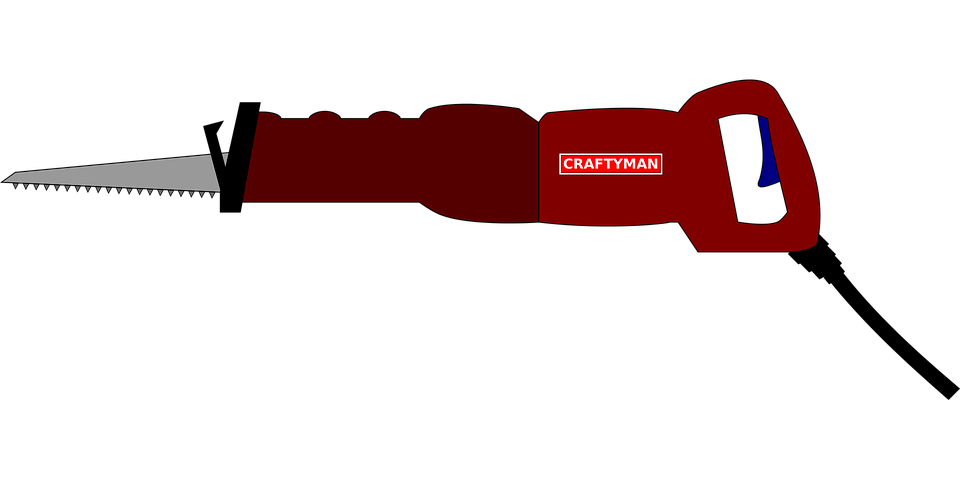6 Safety Tips to Follow When Using a Reciprocating Saw

A reciprocating saw is a versatile tool used in both consumer and work-related applications. As shown below, it features a blade that, when activated, retracts back into the tool and extends out in front of the tool. The blade's reciprocating motion allows it to easily cut through a variety of materials, including wood, plastic and even certain metals. But if you're planning to use a reciprocating saw, you should follow these six safety tips to reduce your risk of injury.
#1) Wear Impact-Resistant Safety Goggles
Always wear impact-resistant safety goggles when operating a reciprocating saw. According to the Bureau of Labor Statistics (BLS), roughly 20,000 work-related eye injuries occur each year in the United States. You can protect against such injuries, however, by wearing impact-resistant safety goggles. If a splinter or piece of debris turns into a projectile and shoots towards your eye, the goggles will block and prevent it from hitting your eye.
#2) Use a Sharp Blade
If the blade on your reciprocating saw is dull or otherwise not sharp, it may tear through your workpiece rather than creating clean cuts. When this occurs, it may sling the workpiece in your direction, potentially resulting in serious injury. To prevent this from happening, use a sharp blade with your reciprocating saw. If the blade is dull, either sharpen it or replace it with a new one.
#3) Keep Hands Away From the Blade
I know this probably sounds like common sense, but it's still worth mentioning that you should keep your hands away from the reciprocating saw's blade. Be conscious of where your hands are located in relation to the blade at all times.
#4) Hold With Both Hands
Don't just hold the reciprocating saw with one hand. Use both hands to achieve a high level of stability. When holding a reciprocating saw with only one hand, the risk for injury increases exponentially. It may "kick back," causing either the saw or workpiece to sling towards your body. By holding the reciprocating saw with both hands, you can control it with greater ease.
#5) Watch the Electrical Cord
Assuming you're using a corded reciprocating saw, you should use caution not to trip over the electrical cord. When you're busy making measurements and securing a workpiece in place, you may forget about the cord, resulting in a slip-and-fall injury.
#6) Don't Use on or Around Flammable Materials
Finally, never use a reciprocating saw on or around flammable materials. While reciprocating saws don't produce a flame, they will produce sparks. And if a spark lands on a highly flammable material, it may cause the material to ignite.
Recent Posts
-
Fire Safety in the Workplace: What You Need to Know
What steps are you taking to prevent fires in your workplace? According to the U.S. Occupational Saf …Aug 23rd 2023 -
Is It Safe to Go Jogging With a Cold Infection?
If you're suffering from a cold infection, you might be wondering whether it's safe to go jogging. T …Aug 22nd 2023 -
5 Safety Tips to Follow When Using a Powder-Actuated Tool
Powder-actuated tools are commonly used to join materials to steel and concrete. Also known as Hilti …Aug 20th 2023




